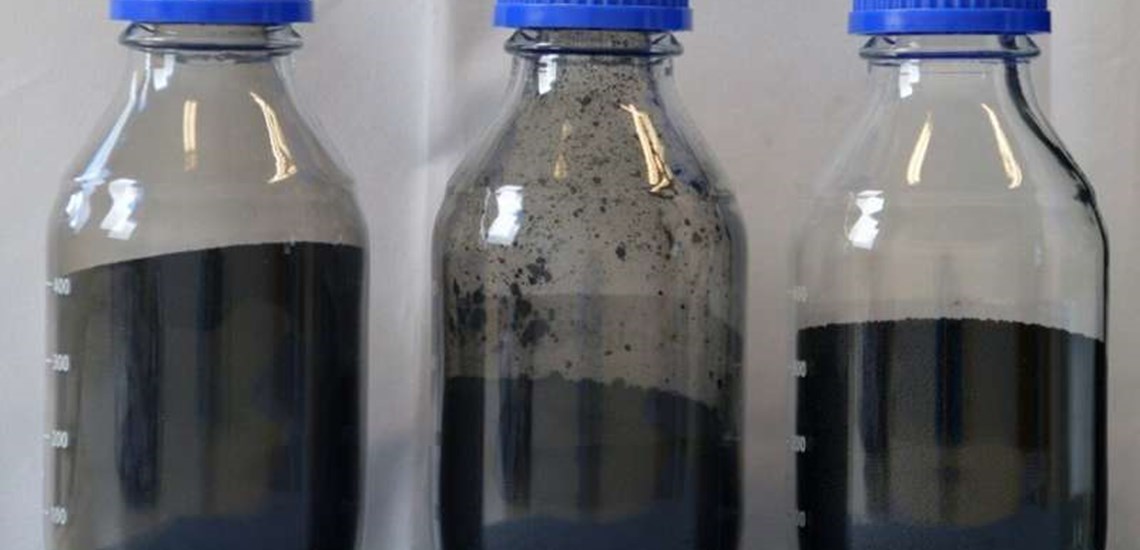For many years, the tyre pyrolysis sector has been plagued by claims and false claims about what the end product is. It is still common to hear processors talk about the Carbon Black they produce from car tyres.
New Purifying Process for Pyrolysis Black
The reality is that they produce a pyrolysis black that contains the remnants of the additives to the compounds added to the tyres to make them function.
Now a new process developed by the Fraunhofer Institute for Building Physics IBP is able to isolate almost all of this ash—allowing both the carbon black and the minerals from the ash to be reused.
Around three kilograms of Carbon Black are found in a standard car tyre. It takes 1.5 tons of fossil fuels to produce 1 ton of Carbon Black, and the process generates up to three tons of CO2.
Recycling tyres, when it happens, often results in them being burned in cement kilns, a process that will be around for a long time as it disposes of large volumes in a short time, and it has great financial benefits to the kiln operators.
As our readers will be aware, there is a growing interest in pyrolysing tyres. The main output is often oil, while the unrefined Pyrolysis Black remains a challenge as it cannot directly replace virgin Carbon Black without some adjustments to the compounds to accommodate the varying properties of the recovered Carbon Black.
The mineral ash, consisting of the additives—primarily silicate compounds and zinc components—used to produce tyres accounts for up to 20 per cent of this Pyrolysis Black.
On behalf of RCB Nanotechnologies GmbH from Munich, researchers at Fraunhofer IBP in Valley, Germany, have developed a demineralisation process for releasing the recycled Carbon Black from its mineral load. “The recovered carbon black treated in this way is nearly free of mineral residues, allowing it to be used up to 100 per cent for the sidewalls of tyres, for example. In other words, there is no need to add any primary Carbon Black. It can therefore completely replace the original industrial materials,” says Dr. Severin Seifert, Group Manager at Fraunhofer IBP. Seifert adds: “To give us some idea: Unless demineralised, just ten per cent of the recycled carbon black can be added to the primary material. Furthermore: The demineralisation process not only generates high grade rCB. The minerals are also recovered with a high degree of purity and can be reused for industrial applications.
The researchers utilise a wet chemical method,” explains Christian Kaiser, Project Manager at Fraunhofer IBP. “To put it simply: We place the (raw) carbon black/ash mixture together with various additives in a reactor, blend it with fluid and run a defined pressure and temperature curve. The individual substances are selectively extracted from the mixture.”
The process is a highly complex one: The parameters and additives must be set in such a way that only one particular mineral, as homogeneous as possible, is extracted from the mixture at a time. Besides that, temperature and pressure have to remain at a moderate level, so that the process is technically feasible without any major limitations. Plus, we must not use too many additives either. It is important to keep an eye on the economic aspects, the process cannot become over-expensive. Therefore, the researchers recuperate a portion of the additives, closing the material cycle here as well. The result of the demineralisation process is a high purity recycled Carbon Black for use in tyres and other rubber products, as well as colorants (master batch) for plastic applications, silicates, which can be used in the building materials industry or for dyes, for example, and also zinc salts for a broad range of applications.
One pilot plant with a reactor volume of 200 litres exists already—and will be in operation for further research at Fraunhofer IBP in Valley for the next two years. The company is currently working on scaling-up the process for industrial use: The production hall is already built, the reactor volume for one production line is expected to be around 4000 litres. Meaning: Every hour, one production line will release 400 kilograms of recycled carbon black from the ash—that is 2500 tons per year. In the final expansion stage, the plant as a whole will have an annual capacity of just on 30,000 tons.
Over the longer term, the idea is to make the transition from a batch process to a continuous process. Potential stakeholders have already expressed an interest: “Our partners are now receiving more requests for samples than we can handle,” says Kaiser. “Ultimately, the recovered Carbon Black refined in this way is a first credible and sustainable solution for replacing virgin Carbon Black.”




















